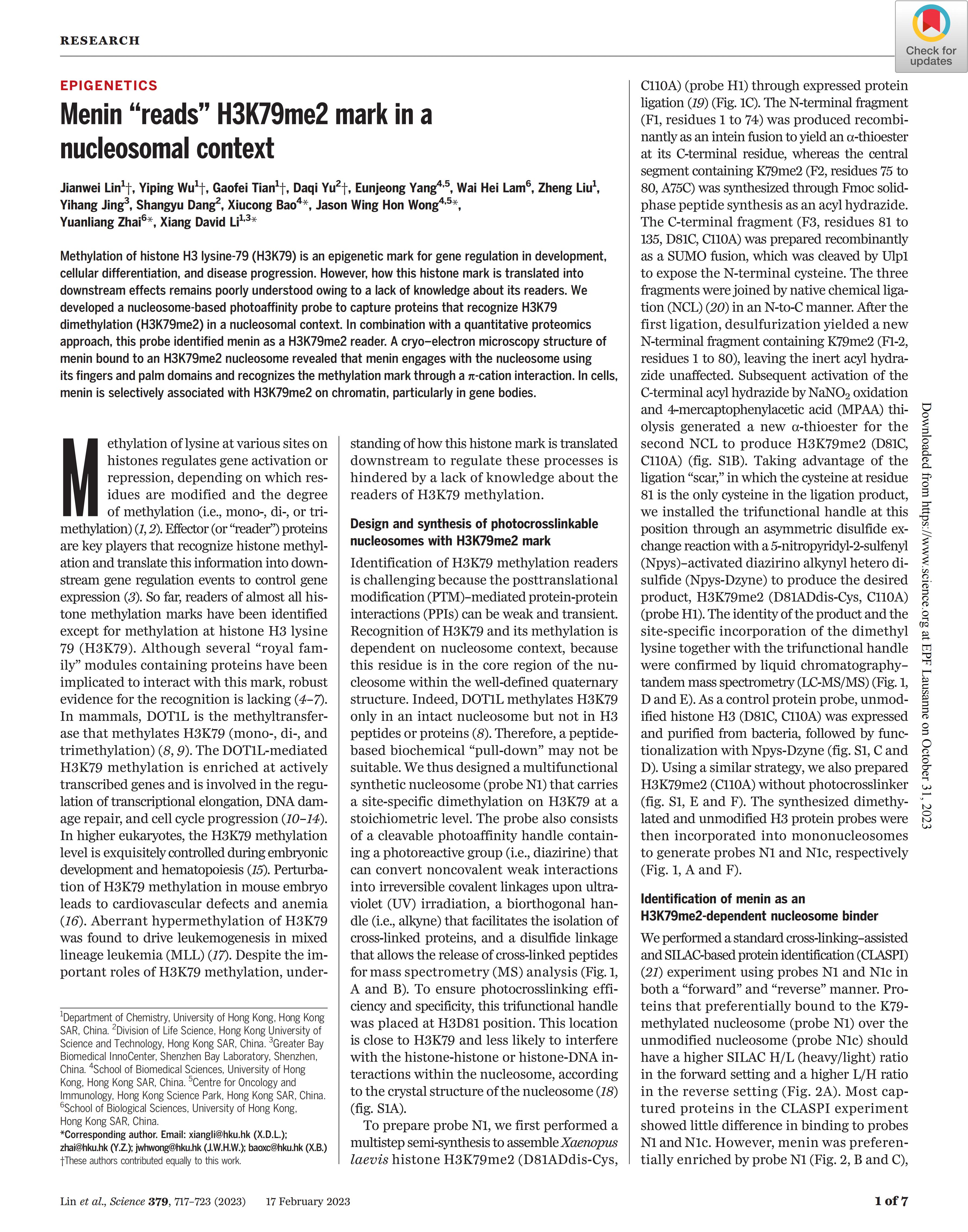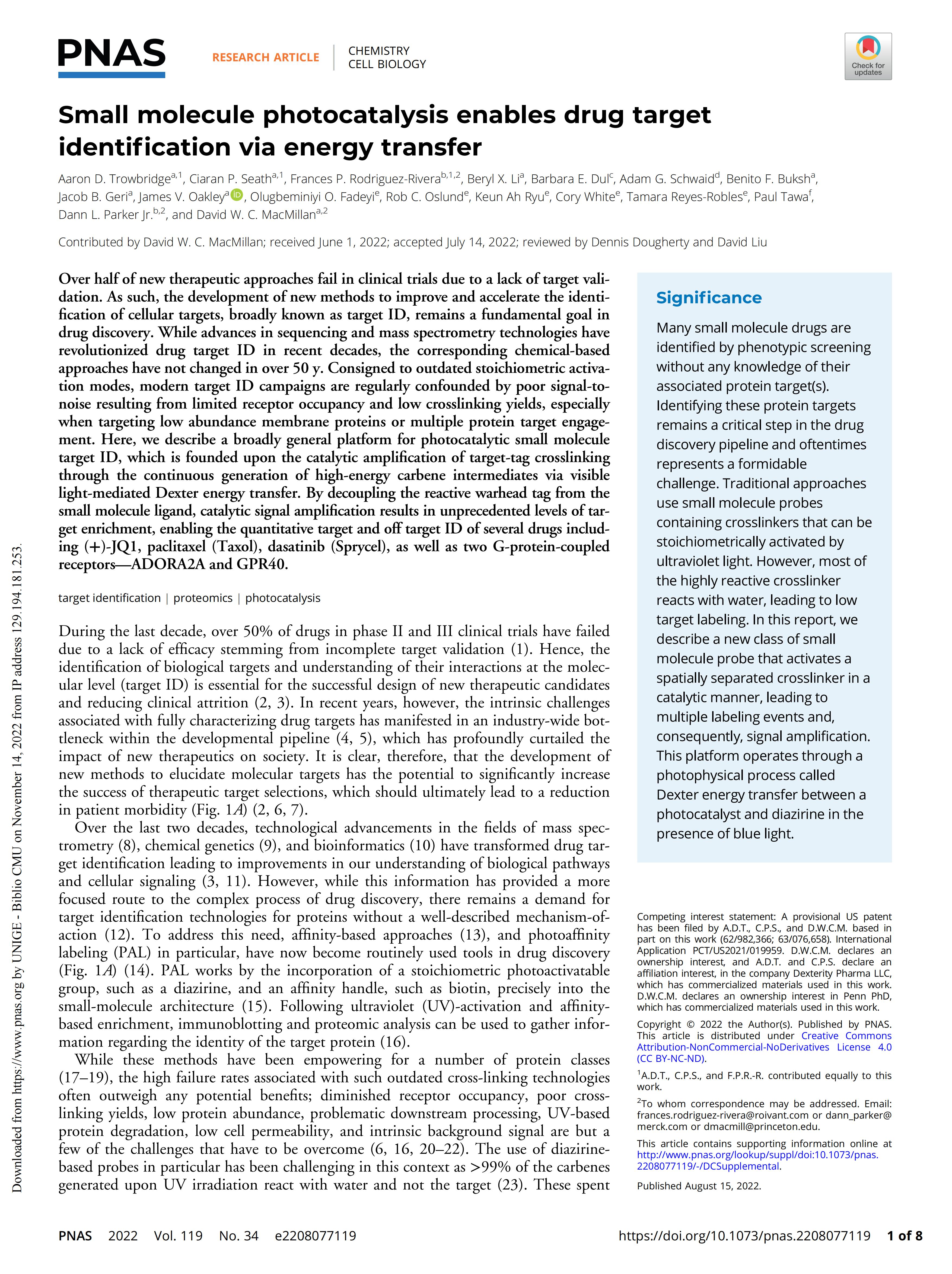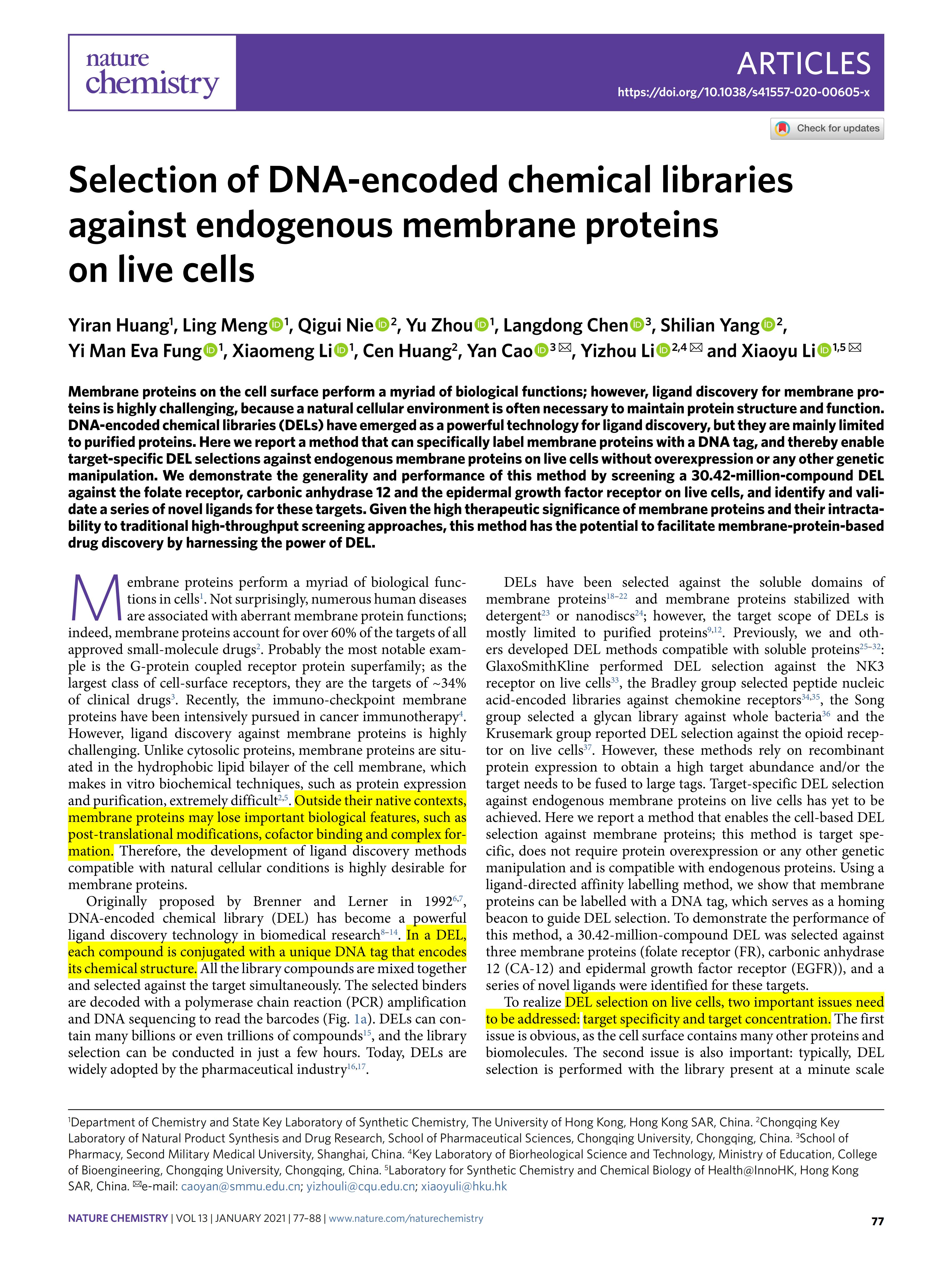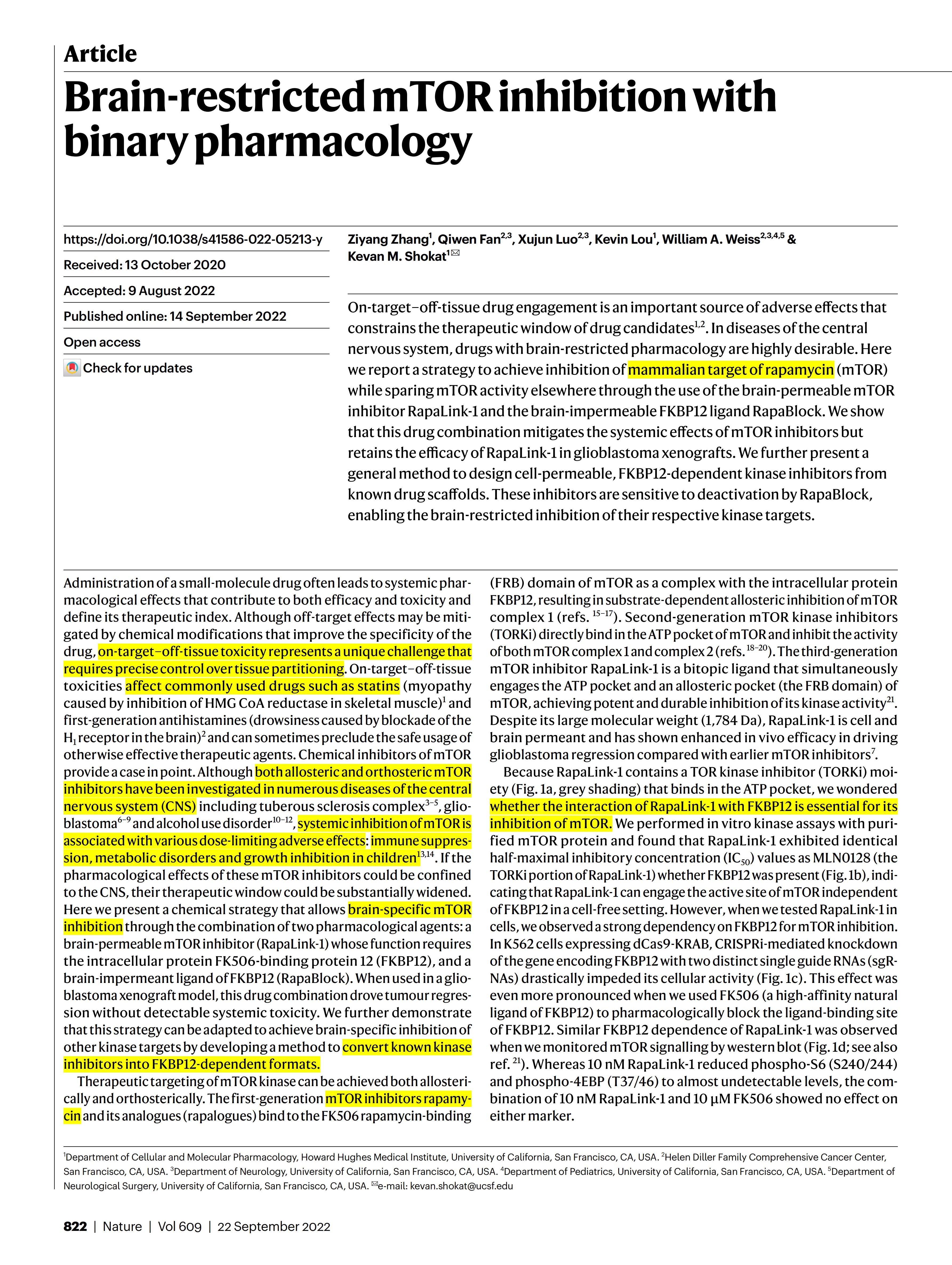- Click the cover to access my presentation slides
2. Menin “reads” H3K79me2 mark in a nucleosomal context
Xiang David Li,Zhai Yuanliang
Published in Science
Key words: Breakthrough on the Known phenomena, H3K73me2, Photocross-linking, Structral biology

- Comments: Identifying the “Reader” of H3K79me2 has puzzled the scientists for many years, but Xiang David Li and his collegues developed a Chemical probe method to identify this “Reader”, and the experiment design of this article is wonderful, they cleverly combined different analysis tools together, while they identified this “Reader”, they also described its working mechanism as detailed as possible.
5. Small molecule photocatalysis enables drug target identification via energy transfer
David W. C. MacMillan
Published in PNAS
Key words: Development on Existing technology, Small molecule catalysis, Target identification, Signal amplification

- Comments: Over recent decades, Target Identification (Target ID) has become crucial in drug development. For identifying targets of small-molecule drugs, researchers previously proposed Photo Affinity Labeling (PAL); however, it suffers from low specificity and a poor signal-to-noise ratio. To address these limitations, this study employs photocatalyst and diazirine groups, which enhance specificity and can be activated by blue light. Additionally, to target intracellular proteins, the photocatalyst group was modified for cell permeability, enabling effective protein capture within cells. To validate this approach, the authors tested the technology using several well-characterized drug-target pairs, demonstrating its general applicability and reliability for intracellular protein Target ID.
6. Selection of DNA-encoded chemical libraries against endogenous membrane proteins on live cells
Li Xiaoyu, Li Yizhou
Published in Nature Chemistry
Key words: Development on Existing technology, DEL, Ligand identification, Membrane proteins

- Comments: In recent years, DNA-Encoded Libraries (DEL) have become a powerful tool for ligand selection. However, achieving target-specific DEL selection against endogenous membrane proteins on live cells has been challenging due to low specificity and the limited concentration of these proteins. In this study, the authors use a known ligand with a DNA tag to label the protein of interest via photo-cross-linking, which stabilizes the binding between the ligand and protein by specifically linking it to the DNA tag of the DEL. To broaden its application, the researchers also tested the use of antibodies for identifying proteins without a known ligand, achieving low but acceptable binding affinity. This research represents a significant advancement in DEL selection for live-cell applications.
8. Brain-restricted mTOR inhibition with binary pharmacology
Ziyang Zhang, Kevan M. Shokat
Published in Nature
Key words: Breakthrough on the Known phenomena, Chemical Biology, Biological Synthesis

- Comments: The problem of On-target-Off-Tissue toxicity has been confusing researchers for a long time, and this research propose a idea of using combination of two different permeable drugs, and an brain-imperment inhibitor of this drug to achieve a higher specificity for this drug.This work use a clever method to solve the problem that some drugs can not only target only one tissue. This work do not contain too many new technologies and different result, what the author did is basicly design new molecules based on the existing drug inhibitors to achieve this aim. This research showed a new strategy and also provide a reference for other similar research.